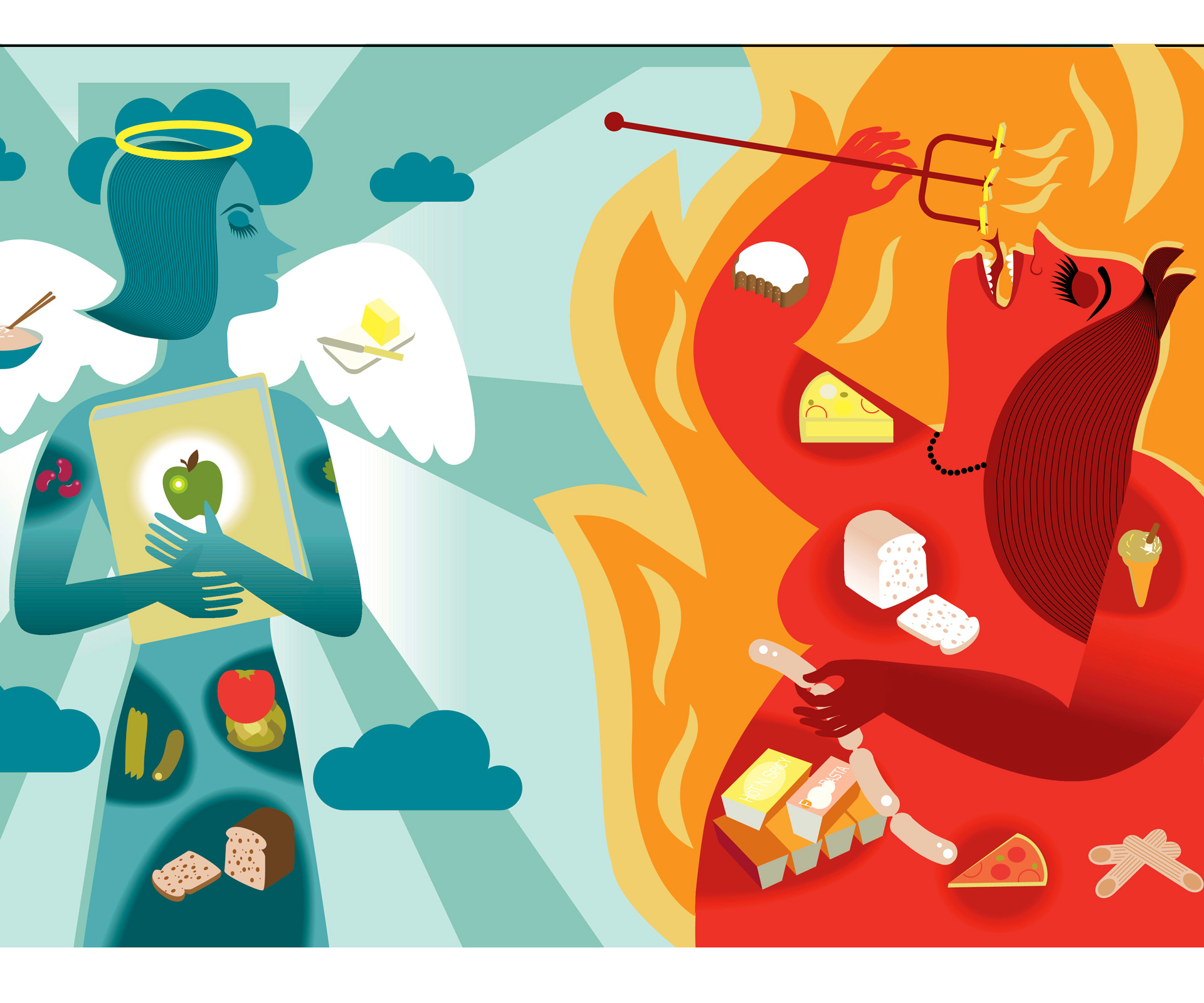Many of us believe we’re eating a healthier diet than we were a decade ago. We may have added more vegetables to our main meals, swapped to low-fat dairy products and opted for a lower-sugar breakfast cereal.
These are all great steps, but healthy eating isn’t just about what’s good for us, it’s also about avoiding what’s bad. In the past, most research on dietary patterns added together everything people ate, both healthy and unhealthy, to create a score for overall dietary quality. But a recent analysis of dietary patterns in 187 countries delved deeper by investigating consumption of good and bad foods separately, comparing data from 1990 and 2010.
Intake of 17 foods and nutrients was assessed for each nation. On the healthy side of the ledger were fruits, vegetables, beans and legumes, nuts and seeds, whole grains, milk, total polyunsaturated fatty acids, fish, plant omega 3s and dietary fibre. The unhealthy side included unprocessed red meats, processed meats, sugar-sweetened beverages, saturated fat, trans fat, dietary cholesterol and sodium.
Although the Lancet Global Health study found consumption of healthier foods and nutrients had increased slightly from one decade to the next (by 2.2 points), consumption of bad foods had increased even more (by 2.5 points). Overall, people in wealthy regions (North America, Western Europe, Australia and New Zealand, for example) had some of the poorest diets because we have the highest consumption of unhealthy foods.
Focusing on improving healthy habits while ignoring bad ones is a real problem. This used to be a result of a lack of understanding about the independent effects of the two.
For instance, says Boyd Swinburn, professor of population nutrition and global health at the University of Auckland, it was once thought physical activity and sedentary behaviour were part of a continuum.
“But now we know they have quite independent effects and one is not the flip side of the other.”
He says people might think if children are not watching television, they’re probably active.
“Well, maybe or maybe not. It depends. They’re quite separate entities with distinct effects.”
Likewise, healthy and unhealthy foods can have distinct health effects. For example, replacing butter in our diet with a plant-derived oil might result in an improved blood-cholesterol profile and reduced cardiovascular disease risk, but if we continue to drink alcohol, our cancer risk will remain heightened.
Emerging evidence supports these observations. In 2014, an analysis by Swinburn’s team of the dietary habits and mental health of New Zealand adolescents was published in the European Journal of Clinical Nutrition. They found diet had two independent effects on mental health: whereas eating healthy foods was strongly associated with better emotional health, there was a significant link between unhealthy eating and greater emotional distress. Although this observational study doesn’t prove cause and effect, it supports the view that healthy and unhealthy foods have separate effects.
New Zealanders eat many discretionary foods that are nutrient-poor and high in saturated fat, salt or added sugar. The most recent New Zealand Adult Nutrition Survey (2008/9) reveals more than a quarter of our energy intake comes from such foods as non-alcoholic drinks (5%), alcoholic beverages (4.9%), sugar and sweets (4.2%), cakes and muffins (3.7%), biscuits (2.7%), pies and pasties (2.5%), snack bars and foods (1.3%) and puddings and desserts (1%).
What’s more, that 25.3% excludes fast food.
By 2020, it’s estimated nearly three-quarters of deaths and 60% of all disability-adjusted life years will be attributed to non-communicable diseases such as diabetes, cancer and cardiovascular disease. Most of the key causes of these diseases are diet or diet-related.
We can eat a healthy breakfast, lunch and dinner and enjoy the occasional chocolate biscuit or two, but if we continue to consume a quarter or more of our energy from nutritionally bereft discretionary foods, we’ll have a big problem on our hands.
*Words by: Jennifer Bowden
Photos by: Getty Images*


